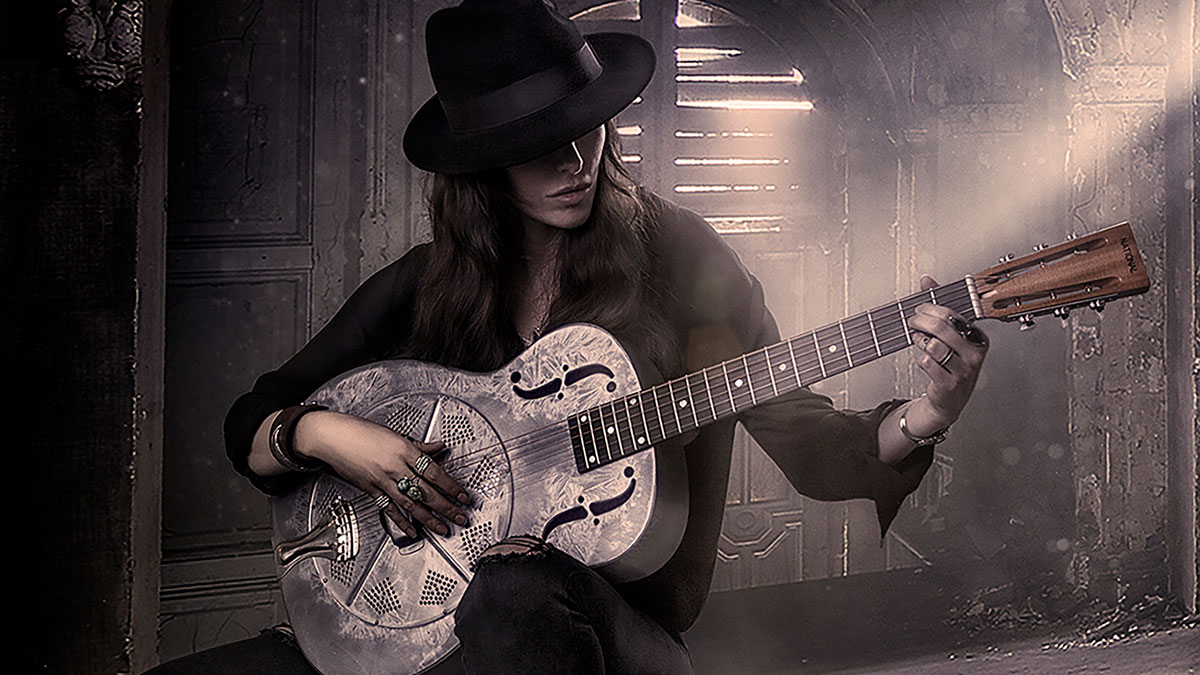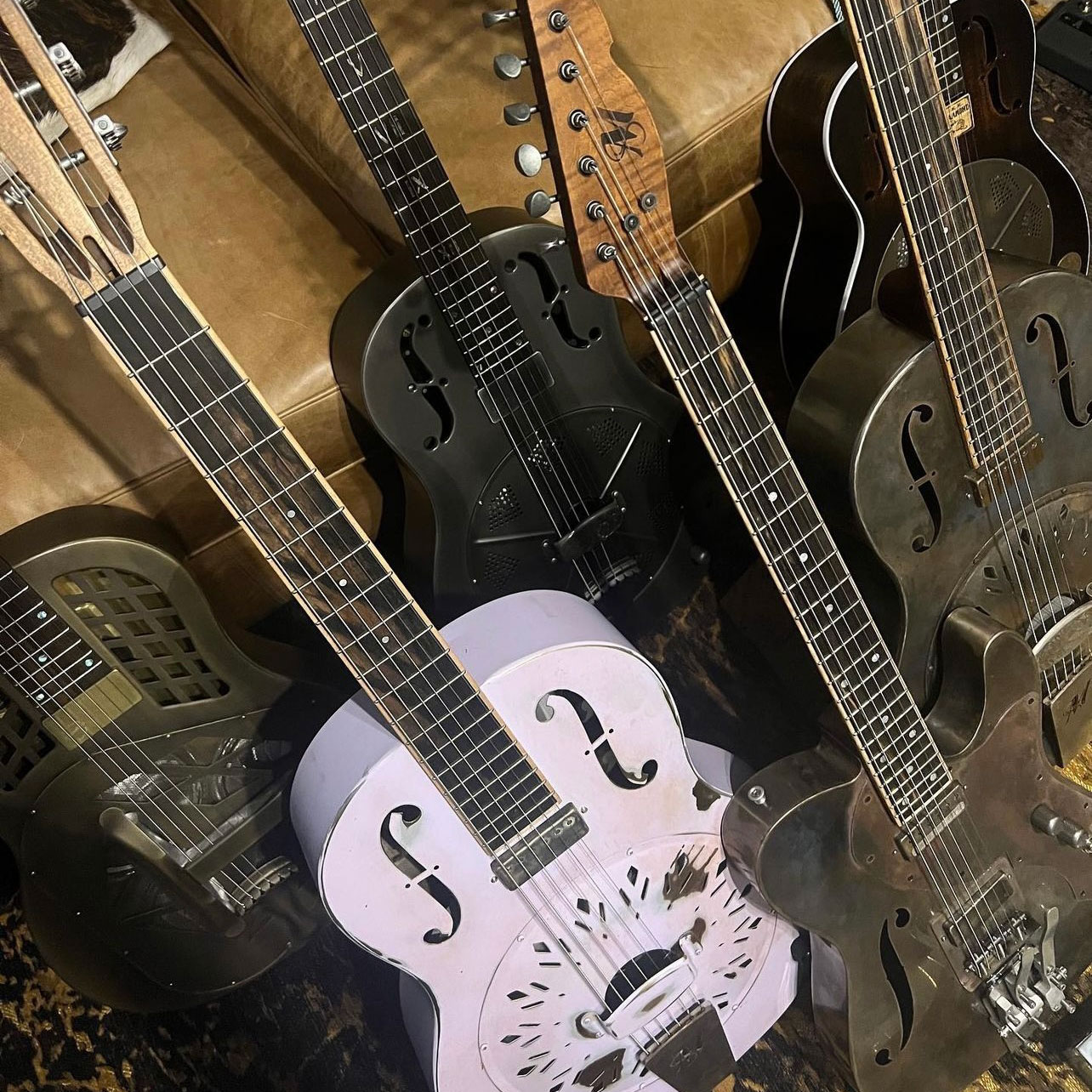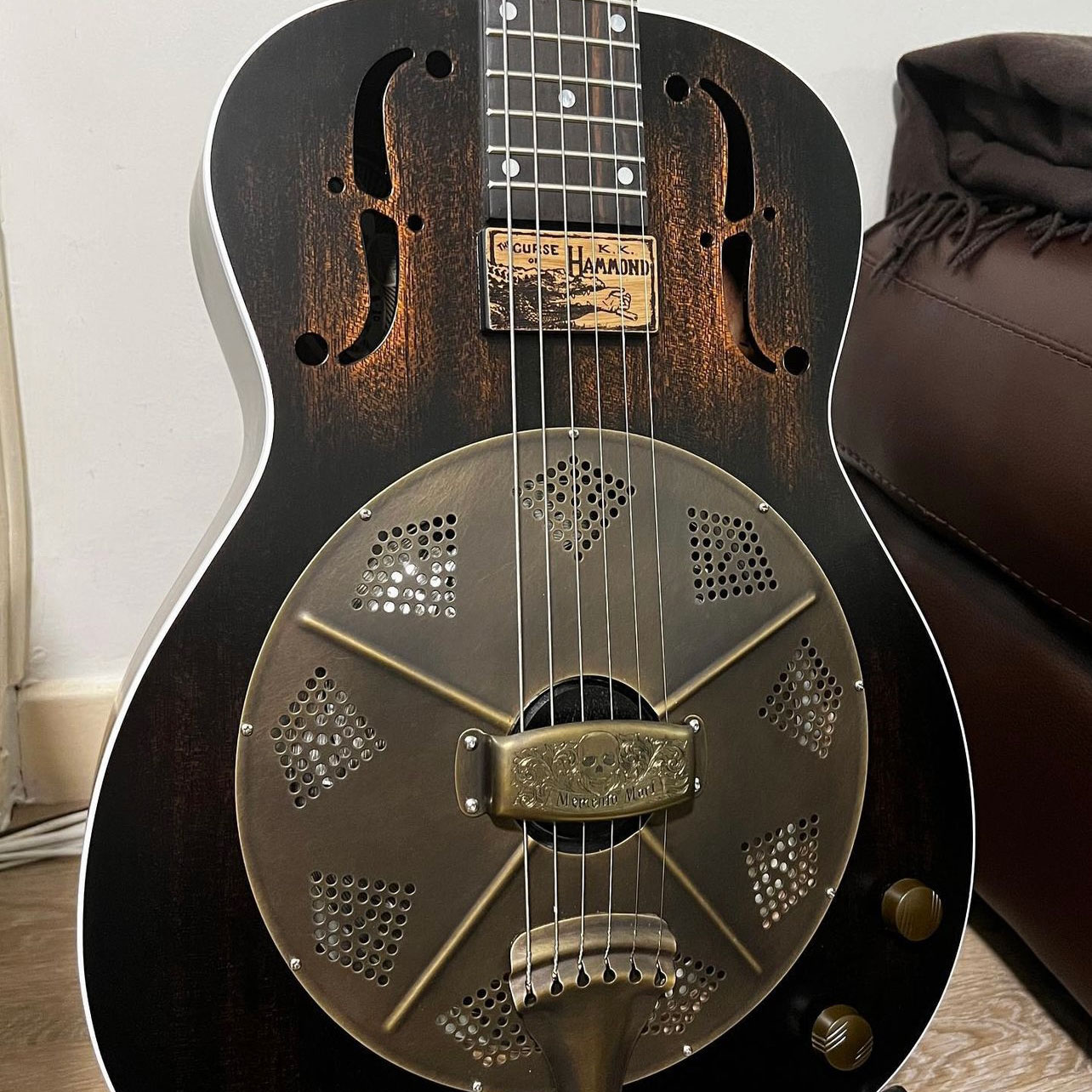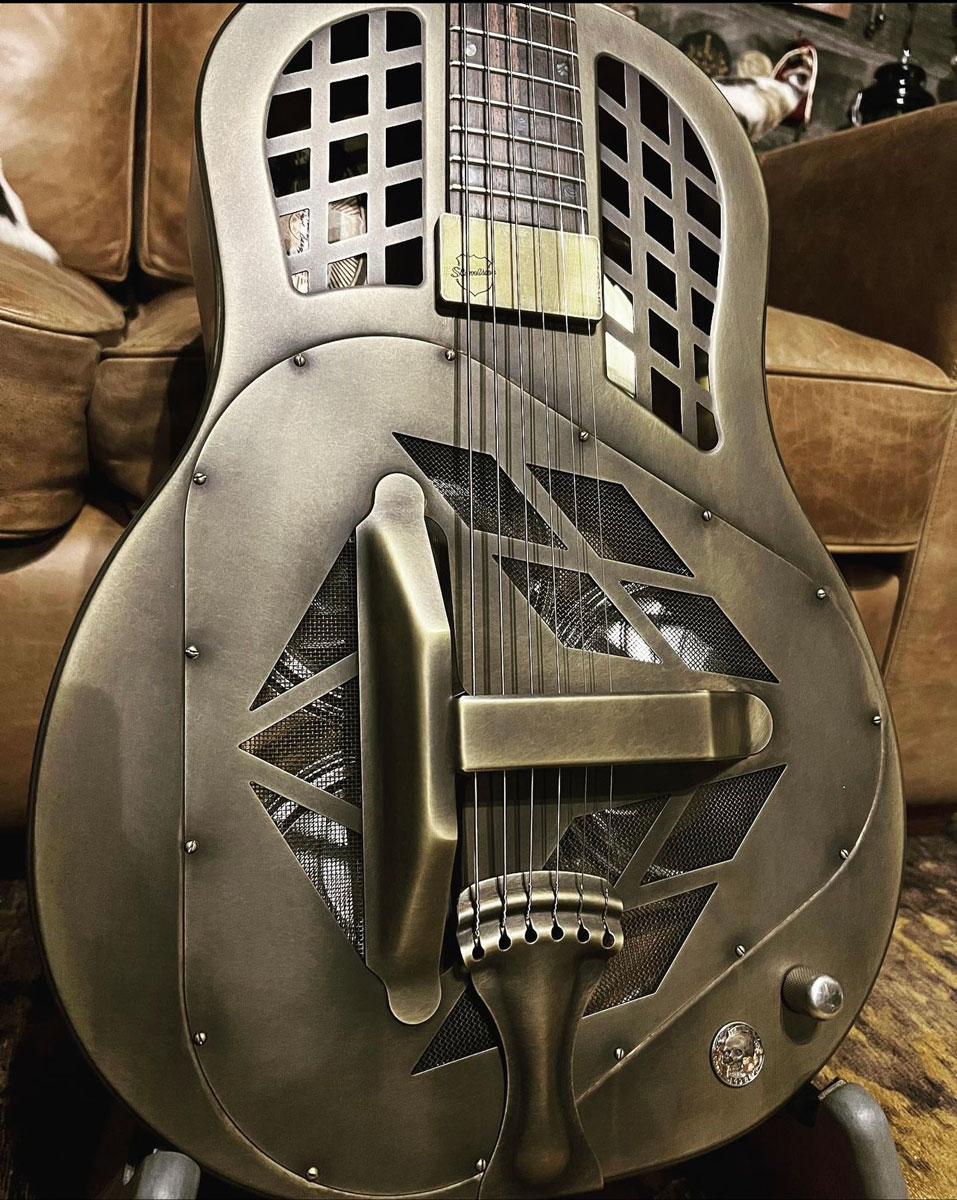Meet The Curse of K.K. Hammond, the spooky resonator blues connoisseur who prefers modern guitars and gives them names like “Hell’s Belle” and “Swamp Bitch”
The Robert Johnson and Skip James enthusiast acknowledges there will be “some lovers of vintage Nationals out there who’ll be horrified”, but she thinks her heavily customized contemporary resonators “just sound better”

In the darkest depths of one of England’s many ‘shires resides a slide blues guitarist and self-confessed “resonator obsessive” who goes by the name The Curse of K.K. Hammond.
Transfixed at a young age by the haunting beauty of the now almost century-old recordings left behind by the likes of Skip James, Robert Johnson and Blind Willie Johnson, her passion for the craft has long since become a way of life. Beavering away in near-solitude, she spends her days cooking up a unique brand of quirky, horror-infused blues with an exceedingly drool-worthy collection of resos for company.
“The whole hermit thing is not just a character – I am genuinely living the hermit life,” she laughs, via a slightly crackly cellphone connection that seems to substantiate those claims right on cue.
But, unlike most of her peers, Hammond’s rootsy leanings are juxtaposed against a preference for new-build instruments, and she champions modern day market leaders like National Reso-Phonic and Matt Eich’s Mule Resophonic Guitars.
“Having seen and played some of these old guitars that are absolutely beautiful, they take a lot of maintenance and care, and I don’t have the skill to do that,” she tells us. “I prefer not to have the challenge of something that needs a neck reset or any major work on an ongoing basis.”
“I really think the modern ones just sound better. They’re better intonated and they’re easier and more pleasant to play,” she adds pragmatically, before acknowledging that there may well be “some lovers of vintage Nationals out there who’ll be horrified” by such claims.
But the proof is in the brass-and-steel-toned pudding, and the UK-based blueser with a penchant for the Bentonia sound has amassed a sizable following in the lead-up to her debut LP Death Roll Blues, which is out now.
All the latest guitar news, interviews, lessons, reviews, deals and more, direct to your inbox!
Before having it mixed and mastered at Abbey Road, she workshopped the album herself, layering up and contrasting the many personalities in her resonator family across the 11-track collection.
“For a lot of people, a resonator is sort of the fourth guitar on the side that they grab for the odd thing. But for me, they’re my bread and butter,” she stresses.
Just as each instrument brings a distinct tonal quality to proceedings (“Brass is a bit more nasal and a bit warmer. Steel is a bit more brash, so it lends itself to those dirtier blues”), each comes with a spooktacular voodoo-inspired nickname and a selection of mods for both aesthetic and sonic purposes.
Bringing the “low end growl”, there’s “Dark Sister”, the steel single cone NRP in an oxidized pewter finish with custom abalone Roman numeral inlays – a historical fretboard look that Hammond unearthed while studying Mark Makin’s compendium of vintage Nationals, Palm Trees, Senoritas… and Rocket Ships.

“I don’t know why you don’t see it more because it’s cool,” puzzles the guitarist, who possesses an assiduous attitude towards detail, as well as a magpie-like affinity for shiny things.
Elsewhere, there’s “Hell’s Belle”, the sweet-sounding brass NRP tricone and “Papa Death”, the 14-fret single cone mahogany-bodied model that’s been fitted with a brass coverplate and an engraved hand rest by “master gun engraver” Greg Goodwillie.
Its headstock is adorned with a miniature Smith and Wesson revolver (a nod to the guitar’s “Revolver” finish), an eyeball and a charm made from the shed skin of Hammond’s pet python – all in homage to the knick-knackery that encrusted Bukka White’s 1933 ‘Hard Rock’ National Duolian.

In the Mule camp, there’s “Swamp Bitch”, the steel tricone, and “Swamp Rose”, the lilac brass tricone – both of which actually sport single cone-style bodies, as is the Mule way. Finally, there’s “Chainsaw”, the steel Mulecaster and Hammond’s only dedicated electric guitar.
But, not to be outdone in the volume stakes, the avid modder has also fitted pickups to all her resonators, with Mulebucker low output humbuckers on – you guessed it – the Mules, and Lollar Firebirds for the NRPs. “They’re not muddy. They’re not noisy. They’re just gorgeous,” she enthuses.
“Again, a lot of people think that it’s blasphemy, or they would, if I did have a vintage National. But, with my modern guitars, I think why not? I think they make fantastic electric guitars!”

In other essential kit, Hammond gravitates towards glass or brass-alloy slides, with her three faves coming from Silica Sound, Diamond Bottlenecks and DaddySlide. Thanks to her guitars’ sturdy structures, she’s able to use string gauges as beefy as .17s, but balances their bassy hues with a light playing touch.
Live and “for fun more so than recording” she uses Hughes & Kettner amps, and in the studio, models amp and pedal sounds using Positive Grid’s BIAS FX 2 software.
“I think I’ve developed a style which is modern but pays homage to the old Delta blues,” surmises the contemporary gear-loving Brit. “I break molds sometimes. I just go with it!”
- Death Roll Blues is available now via streaming platforms and at thecurseofkkhammond.com.
Since graduating university with a degree in English, Ellie has spent the last decade working in a variety of media, marketing and live events roles. As well as being a regular contributor to GuitarWorld.com, she currently heads up the marketing team of a mid-scale venue in the south-west of England. She started dabbling with guitars around the age of seven and has been borderline obsessed ever since. She has a particular fascination with alternate tunings, is forever hunting for the perfect slide for the smaller-handed guitarist, and derives a sadistic pleasure from bothering her drummer mates with a preference for wonky time signatures.

